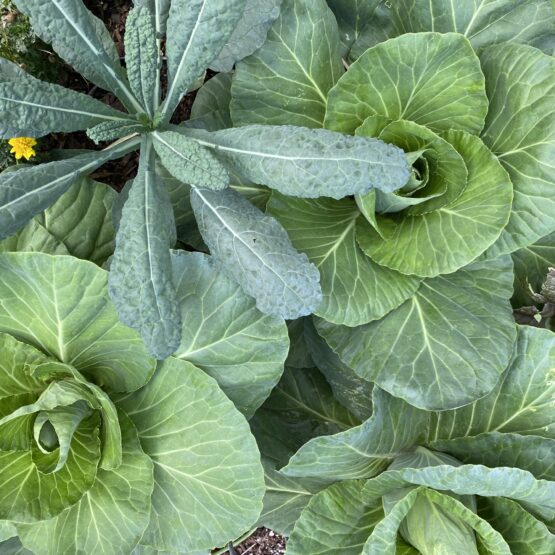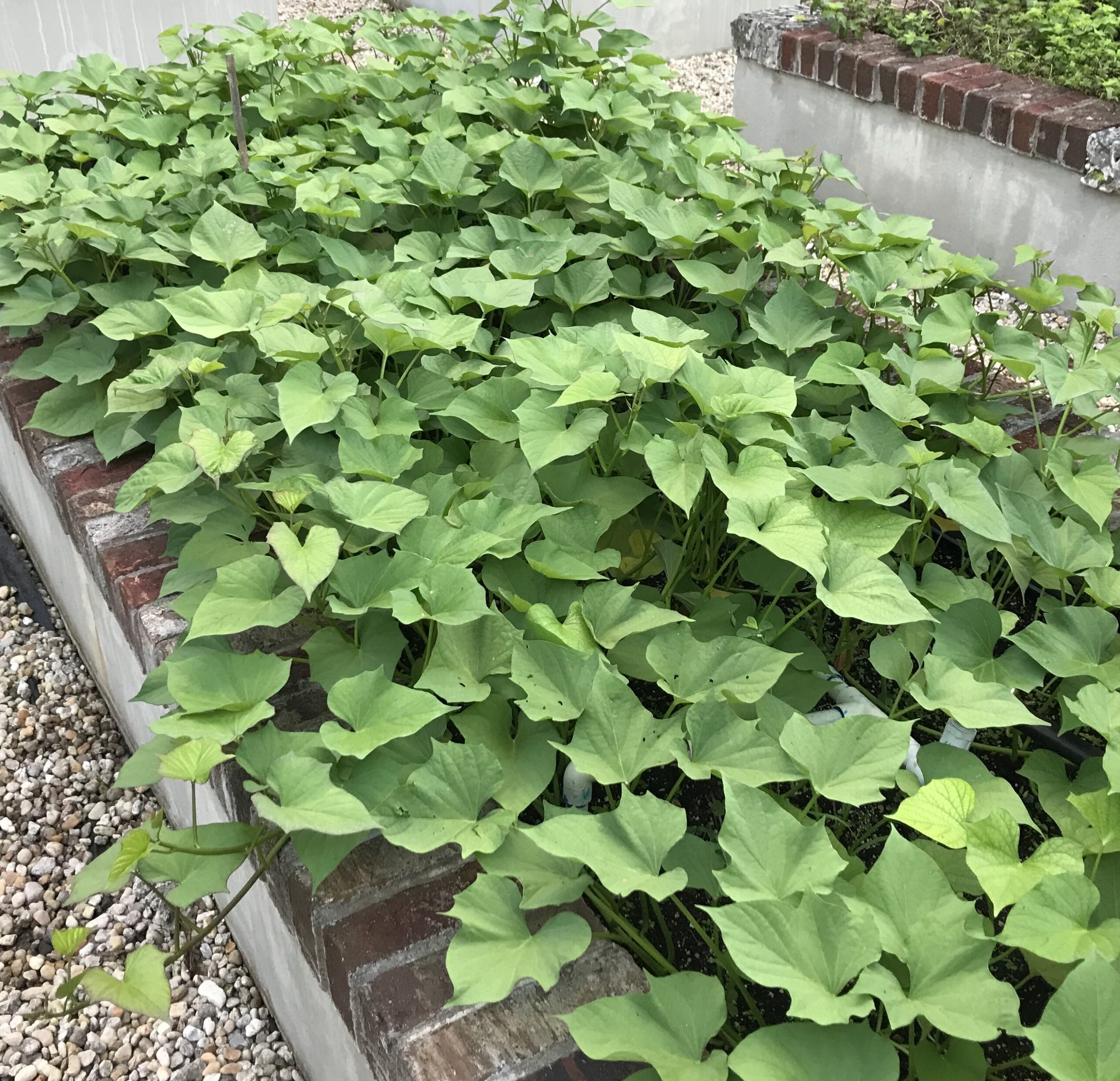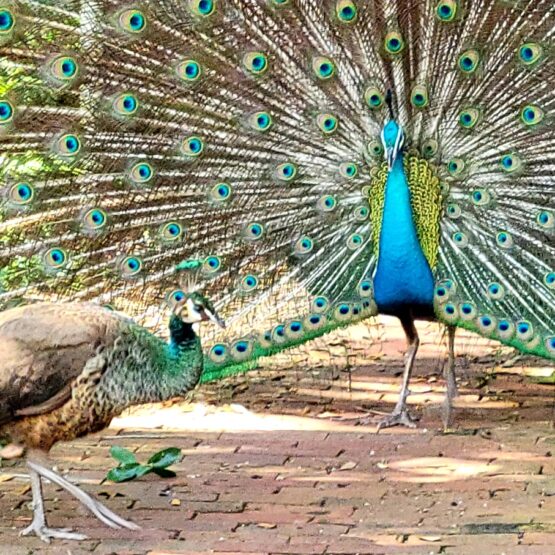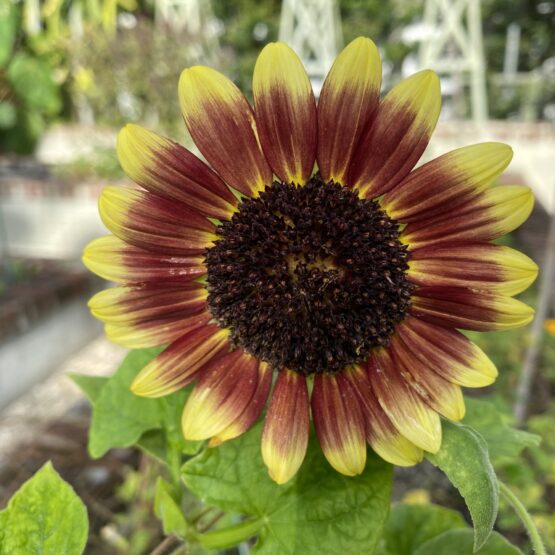Each gardening season nature throws us a new curve or two to keep us on our toes. The peacock challenge this year was especially daunting, as we went from one strategy to another that didn’t quite solve the problem. Yes, the peacock is a beautiful creature, and we did not want to hurt them; however, how frustrating is it when they come in and destroy weeks or months worth of effort in the garden?
We’ve had a peacock issue in our garden before, but never to the extent that we faced this year. We have an enduring debate among our garden members as to why the sudden massive influx of these birds – Was it because we lowered our hedge from nine feet to five feet, so that our garden would be more visually accessible to the community? Or was it because there are just more of them around than before, and the neighbor is feeding them on a daily basis so they stay in our neighborhood, and they would have flown over the nine foot hedge anyway? I doubt we will find a definitive answer – perhaps raising the hedge again will give us a clue – ?
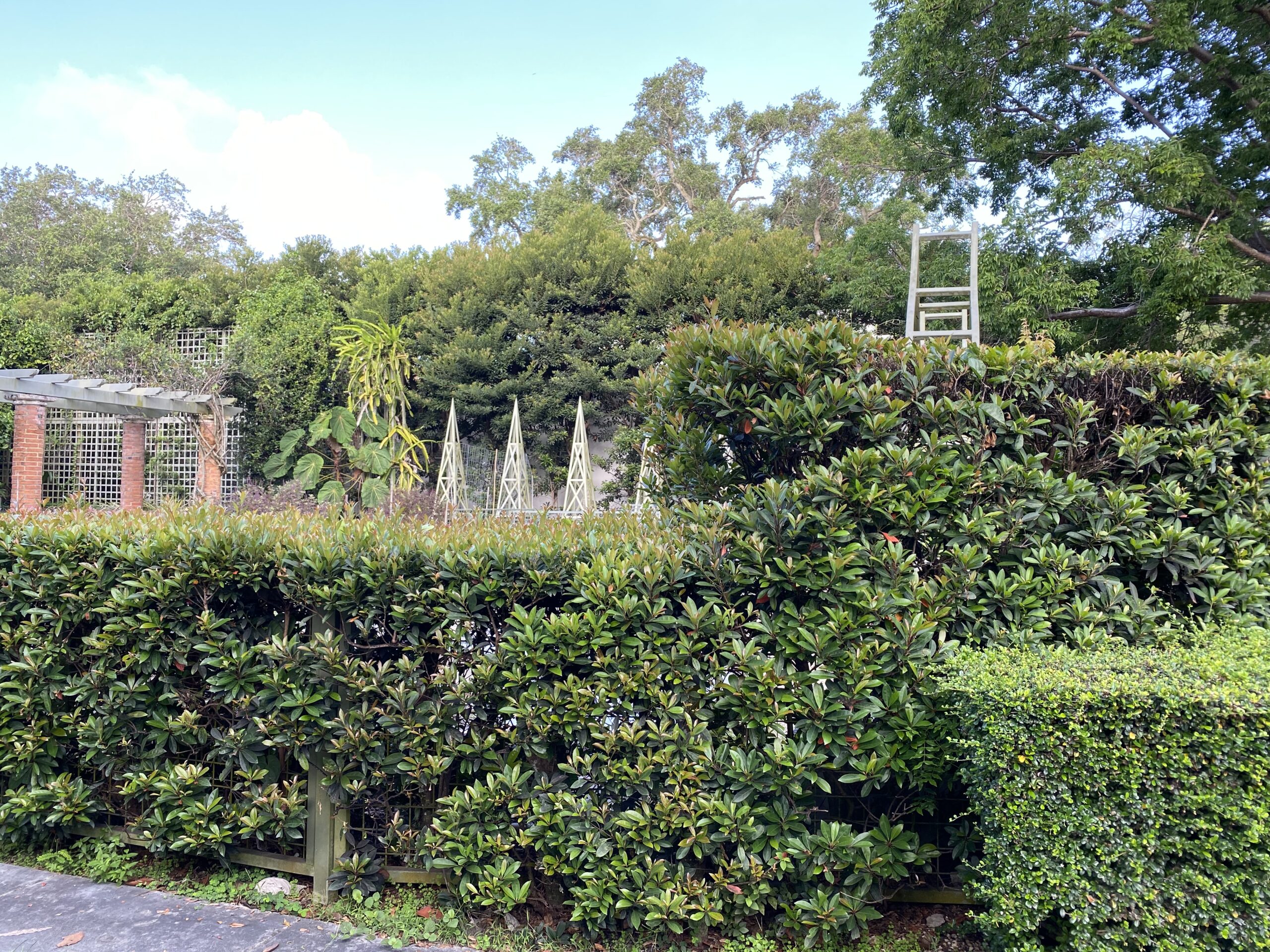
The Great Debate: Did lowering the hedge invite the birds in?
Meanwhile, we had to deal with this problem. Peacocks tend to travel in flocks – we have counted as many as 15 to 20 birds roaming together on our street. They can definitely fly over hedges. And the crops they seem to like most are anything in the brassica (cabbage) family and pepper plants. When we put our starter plants in the ground in October – a bounty of brassicas and peppers donated to us – we returned a few days later to find almost nothing in their place; for most, just a stub of stem was left in the ground. It’s interesting that certain other crops they won’t even touch, or some they will taste one or two leaves of and decide it’s not for them, e.g. strawberries, tomato (leaves), lettuces, carrots, etc. Peacocks also like to dig holes in beds to lay down in; luckily this year they did that only in beds not yet planted so this did not become an issue that we needed to address.
PARTY FLAGS
We started out with a strategy used successfully twice in the past that seemed to deter the peacock very well: draping party flags around the beds where we had brassicas planted. They had stopped eating our crops and disappeared for the season. So last fall in the beds most in danger of peacock invasion, we set up bamboo stakes in each corner and strung the flags all the way around. We also hung flags at our garden entrance and even some across the lowered hedge to possibly hinder their flying over. It did not work like it did in the past! It helped to some extent, but they still managed to reach in and around the flags to munch on their favorite crops – what a pain! More plants were just destroyed – and we grew increasingly reluctant to put in more starters at a crucial time of the year, i.e., fall planting. What made the difference in this strategy working or not? It seems there were just a lot more of them at any one time in the garden than we have had in the past. One or two peacocks do not do much damage, but a whole flock – yikes! Or maybe these particular peacocks were just party animals!
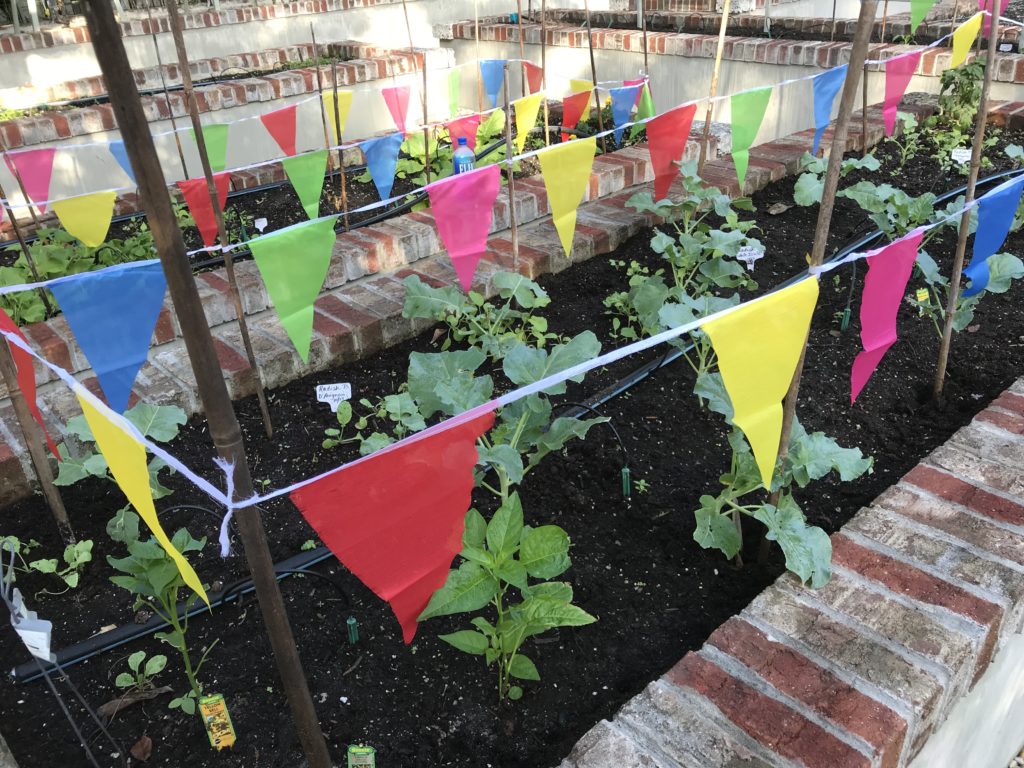
Party flags vs. peacocks worked in the past (but not this year!)
PEPPER SPRAY AND OTHER POSSIBLE DETERRENTS
So next we tried to deter them through taste and smell. We made a mixture of water with a little cayenne and soap in it and sprayed it on the vulnerable plants. It worked – only temporarily! The peacocks took a few bites of plants and then stopped. But once it rained we would have to spray each plant all over again. With over 20 beds this was not an option especially due to the frequency of rainfall. The same problem occurred with our vinegar idea – pouring a strong solution along the entire sidewalk in front of the garden was simply washed away. As a long shot, we sprinkled a powder that keeps dogs and cats out of the garden due to its smell; while we figured there was little chance of this, we were desperate. No dice.
PIGEON SPIKES
It was mentioned earlier that the peacocks did not bother the tomato plants. However, ripe tomatoes were a different story. When they devoured our first beautiful fruit of the season, one of our gardeners was eager to employ pigeon spikes on the beds (see photo). These are typically used on the roofs and balconies of high rise buildings to keep pigeons from landing and nesting there. We did have a few considerations as to this method: first, they could be dangerous if fallen onto. We have a variety of people coming in the garden, including children – we would have to be diligent in turning them into the beds each gardening session to avoid any accidental injuries. They are also costly and time-consuming to construct, not really feasible for our large number of beds. It did not appear that they would hurt the birds but rather just deter them.
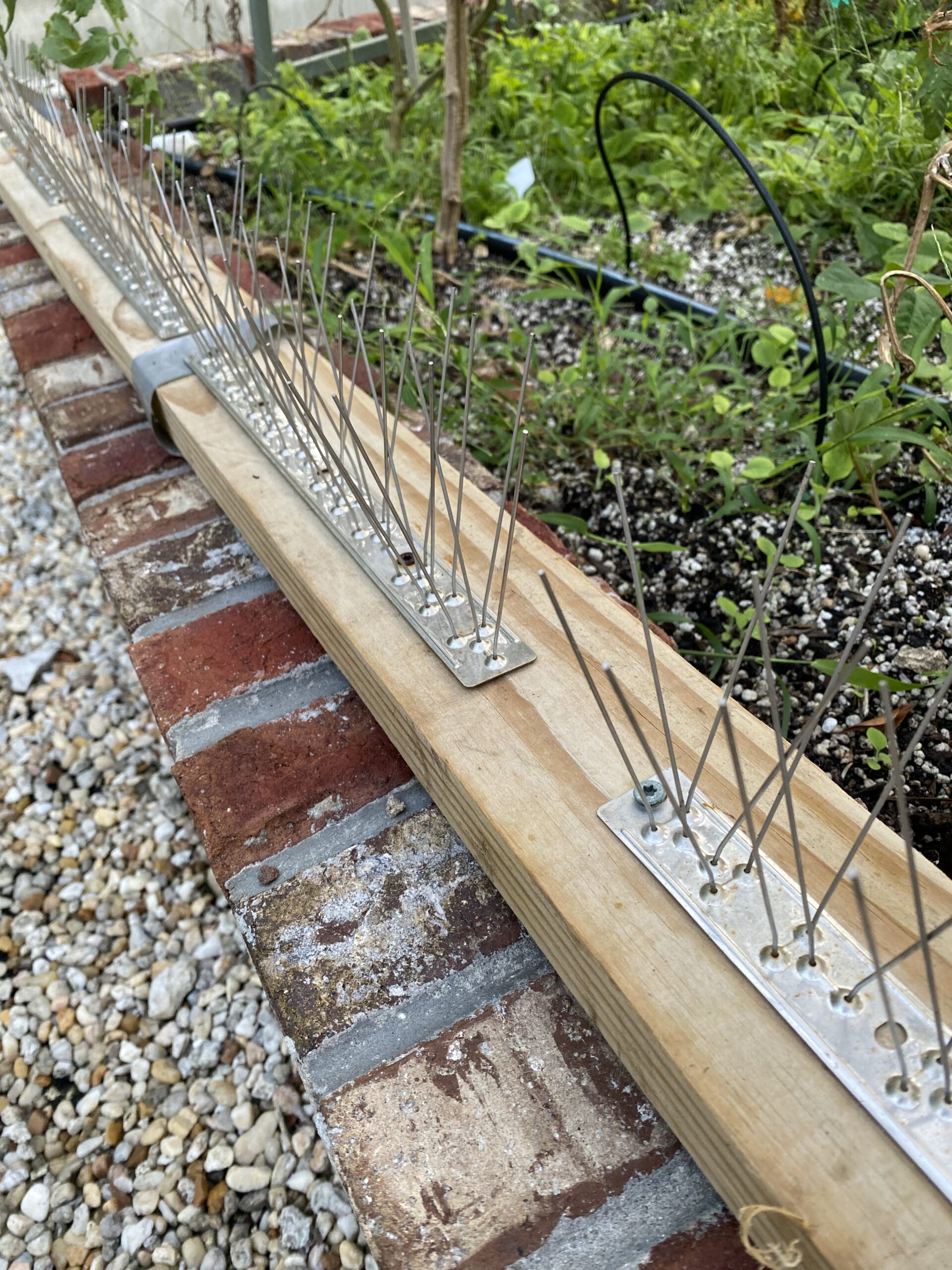
Pigeon spikes – hand-assembled
We went ahead and did a trial run with one bed, placing the board of spikes directly in front of our tomato plants. Problem solved! The tomatoes remained safe for the entire rest of the season. But for the reasons cited above, we decided against constructing any more. A part of just one bed was protected
BIRD NETTING?
Some of our gardeners suggested bird netting as a possible solution. And some of us thought that was a crazy idea – we have over 20 beds, how in the world were we going to cover them all with netting? And how would you tend to the beds and the crops with netting in the way? It did not seem feasible. Then one of us found this video of a very simple, practical way to use bird netting in the garden.
How to (easily and cheaply) Protect your Plants from Birds – youtube
After watching this clip, our hopes were up. One of our gardeners actually had a large amount of excess plastic tubing from his business to donate which perfectly fit the bill. All we had to purchase was the netting, and that was easily accessible and affordable.
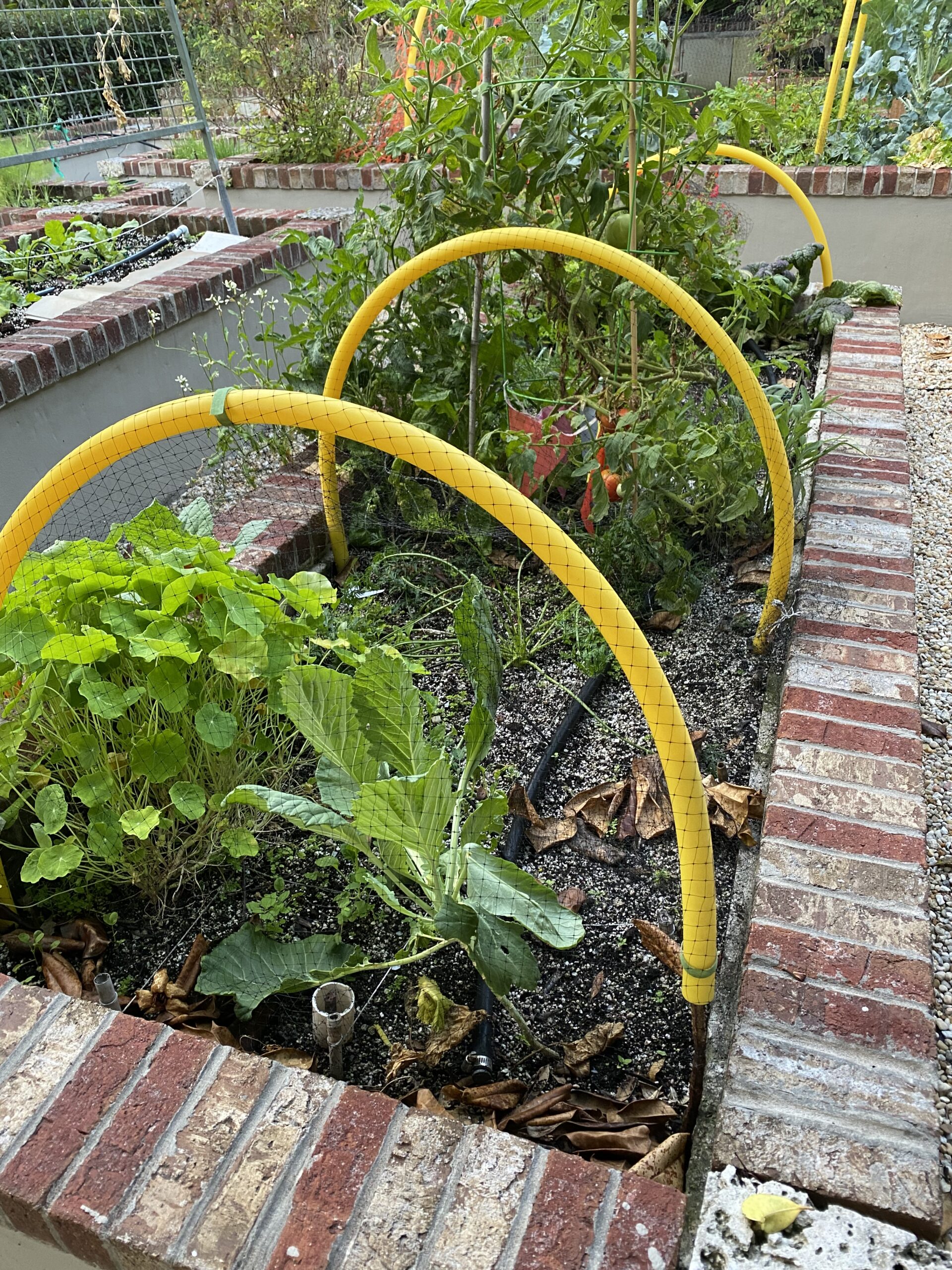
Bird netting did the trick!
We used short steel ribar or bamboo posts to mount the hoops on. Velcro ties (available in rolls) were perfect for holding the netting in place; we could slide the netting up by the velcro so the bed could be readily accessed, and just slide it back down into place when done. We secured it around the sides of the bed either with a few bricks or with the stakes we already had in some beds for our square foot gardening.
The results were immediate – the netting kept the peacocks from getting to the crops they loved. It appears they pretty much lost interest in visiting the garden except for a few stragglers now and then. It was well worth the time and labor to know our crops were secured for the remainder of the season and the problem was finally solved. We did not cover every bed by the way – only the ones with crops they typically went after.
Our strategy against the almighty peacock worked, and we will start earlier next year. We were able to get some collards, kale and lots of peppers out of the season after all, but we sorely missed our cabbage and kohlrabi crops this year. We look forward to better harvests – under our bird netting – next season!
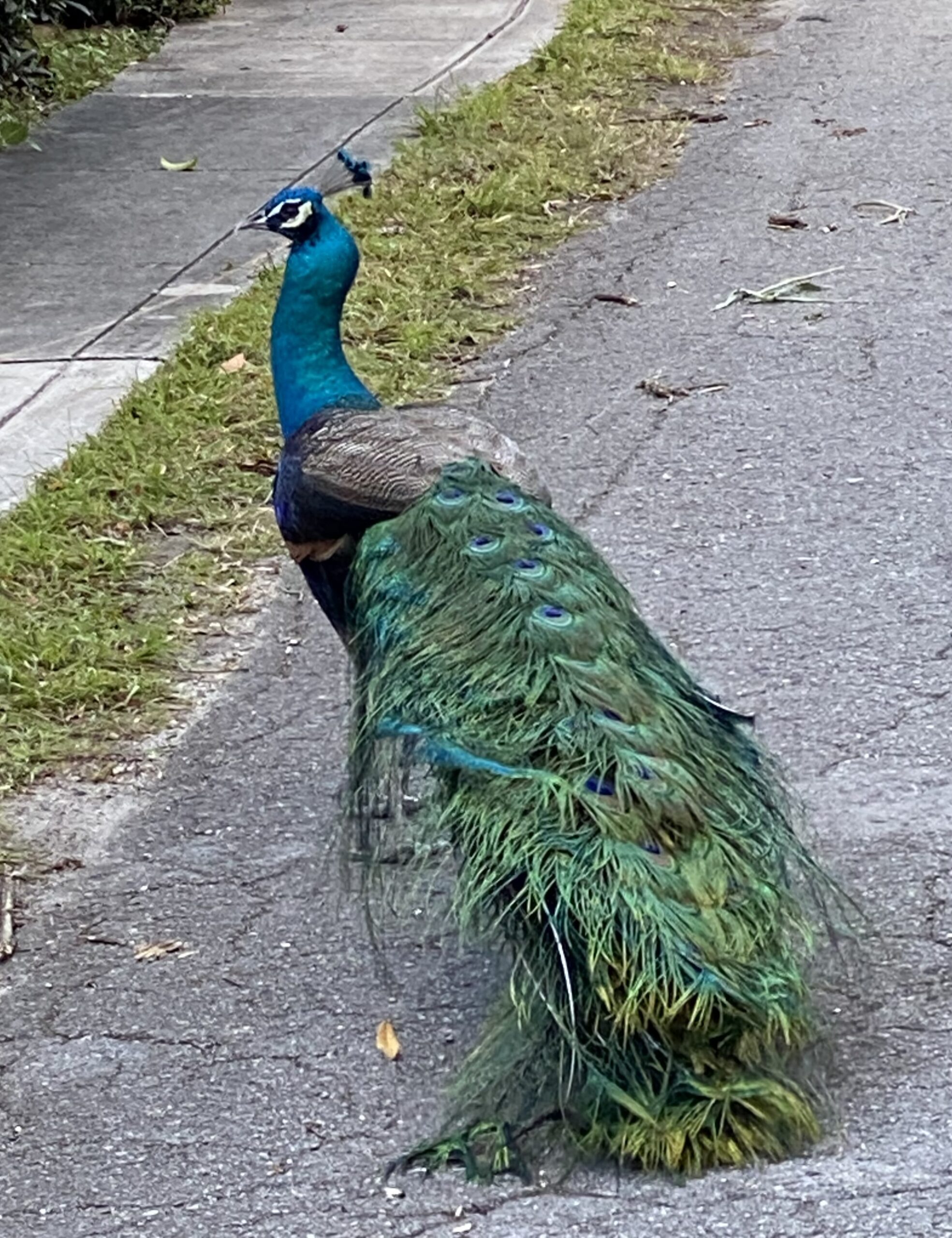
“Walk on by” – please!
You Might Also Like...
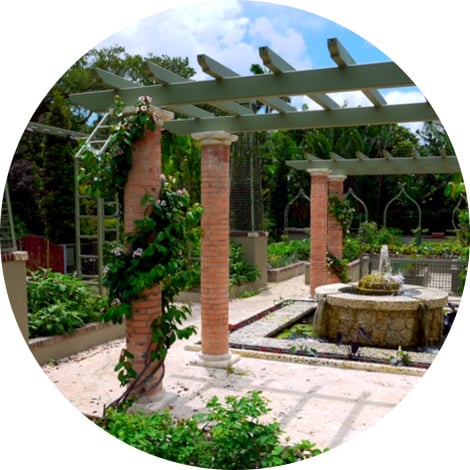
We are a small group of South Floridians who share a love of organic gardening, cooking and leading a healthy lifestyle. We garden together in Miami on a weekly basis year round, and enjoy the labor, harvest and feeling of community that this provides us. We are learning together what it means to grow food in South Florida, with our unique climate and seasons, which are so different than the rest of the country. This website is a venture in sharing information and resources relevant to gardening (and enjoying the harvest) in our South Florida environment. We hope you will find it useful!
